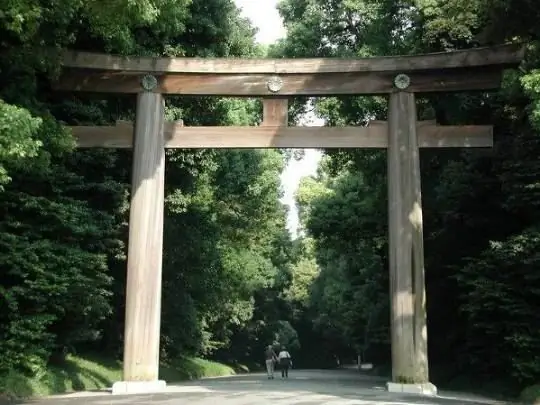
Description of the attraction
Meiji Shrine (Meiji Jingu) - the tomb of Emperor Meiji and his wife Empress Shoken, the largest Shinto shrine, which appeared in 1920 on a public initiative. It is located in the Shibuya area, in the Yoyogi City Park.
During the reign of Meiji, who became emperor in 1868, Japan, after the feudal rule of the Tokugawa, abandoned self-isolation and became a more open state to the outside world. The name "Meiji", which was taken by Emperor Mutsuhito upon accession to the throne, means "enlightened rule." In his "Oath Promise" Mutsuhito declared the principles of his government: democracy (taking public opinion into account when deciding public affairs), the predominance of national interests, freedom of action and independence of the court, as well as the effective use of knowledge to strengthen Japan's role in the world. After the death of the emperor and his wife in 1912 and 1914, as a sign of respect for the imperial couple, a public movement arose in the country for the creation of a temple, and the necessary donations were collected. During the Second World War, the temple burned down, and its reconstruction was also supported by many Japanese in the country and abroad. The temple was rebuilt in 1958.
The building of the sanctuary is a typical example of the unique temple architecture of Japan; during its construction, the cypress growing in Kiso was used - this is a mountain range in the central part of the island of Honshu, the so-called Japanese Alps. The building is surrounded by a garden in which all the trees and shrubs that are found in the Land of the Rising Sun grow. Plants for him were also donated by many Japanese. In the northern part of the temple complex there is a treasury museum, which contains things and objects from the Meiji reign.
The Outside Garden of the Meiji Jingu Temple is also home to sporting events. The Memorial Picture Gallery is located here, which contains 80 frescoes depicting events from the life of the imperial couple. The Outer Garden also houses the Meiji Memorial (Wedding) Hall, where Shinto wedding ceremonies continue.
Visitors to the Meiji Shrine can receive an omikuji, a fortune-telling paper in English. The text of the prophecy is a poem composed by the emperor himself or his wife, which is accompanied by the talk of a Shinto priest.






